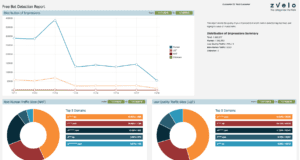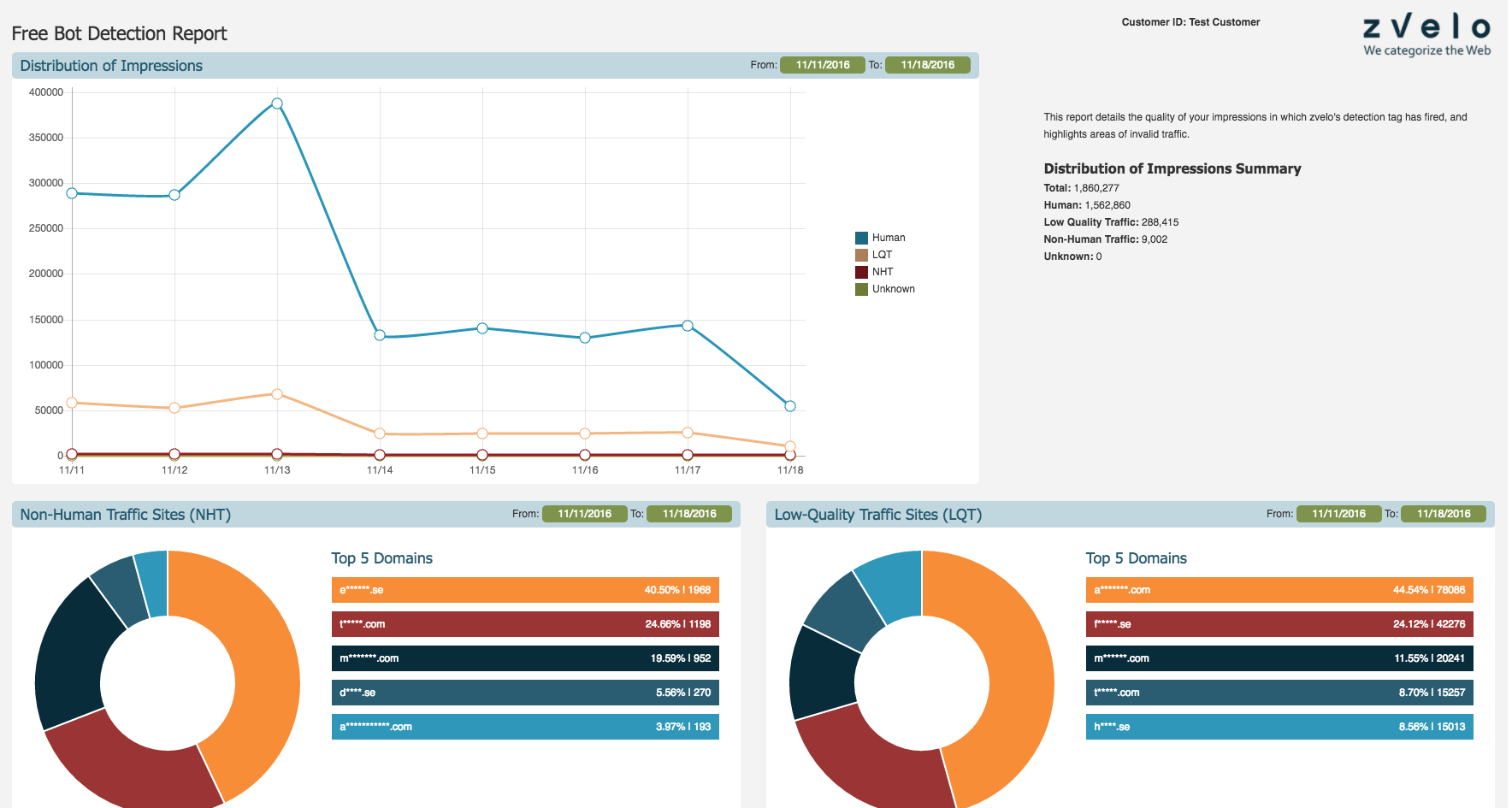zvelo Releases The Most Comprehensive Bot Detection Service For Web Traffic Quality Reporting & Ad Tech Platforms
The new service from the Denver-area detector of malicious data can show percentages of non-human traffic to ads or sites.
*****The following article, by Barry Levine, appears within MarTech Today’s web site and was originally published on January 23, 2017
zvelo, a Denver-area firm whose services include content categorization and malicious detection data, is today launching what it describes as the most comprehensive bot detection service for digital advertising platforms.
A Javascript tag is inserted into an ad or a web page, so that the service can analyze the activity of each visiting browser to determine if the user is non-human (that is, a software bot). The service is also designed to detect “low-quality traffic” (LQT), where people are paid to quickly surf ads or sites.
The detected browser signals include mouse movement, time on page, browser properties, the amount of the web page visible in the browser and other signs. A dashboard displays percentages of Non-Human Traffic (NHT) or Low Quality Traffic (LQT):

Those percentages indicate if there’s a problem, zvelo President and CEO Jeff Finn told me. If the advertiser or site wants to take action, he said, his company offers a paid data feed called the Invalid Traffic Dataset, which provides the specific IP addresses of the detected bots or LQT.
In a typical use case, he said, the advertiser that has decided it has a problem would instruct a demand-side platform (DSP) to decline a real-time bid to any of those IP addresses. Because bots frequently change their addresses, the feed is updated every 15 minutes.
Finn said about two-thirds of his company’s customers are DSPs, and the remainder are supply-side platforms (SSPs) that are working with publishers to clean up their inventory or create premium sections.
zvelo conducted a closed beta of the service with selected customers for three months.






